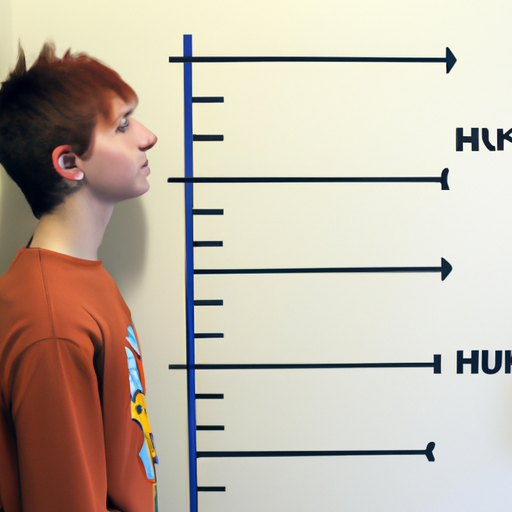As a caregiver, you may keep asking yourself, “When does a boy stop growing?” Understanding the growth pattern in boys can be a complex issue, but we’ve simplified it here in this guide.
1. Understanding Growth in Boys
Boys experience various stages of growth from infancy through adolescence. The growth process is a combination of genetics, nutrition, and overall health. Boys typically experience a significant growth spurt during puberty, which usually occurs between the ages of 12 and 16.
2. Stages of Growth
Let’s delve into the key stages of growth in boys:
2.1 Infancy
During the first year of life, boys grow rapidly, roughly about 10 inches in length.
2.2 Childhood
After the first year, the growth rate slows down substantially. On average, they grow about 2-2.5 inches per year until puberty.
2.3 Puberty
Puberty is when boys experience their most significant growth spurt. On average, boys can grow an additional 4-12 inches during this stage.
2.4 Post-Puberty
After puberty, growth typically slows again, and most boys will stop growing around the age of 16-18. This is typically when they reach their adult height.
3. Factors that Influence Growth
There are numerous factors that can influence when a boy stops growing:
- Genetics: A major factor in determining a boy’s height is genetics. If the parents are tall, the boy is likely to be tall as well.
- Nutrition: Proper nutrition is crucial for growth. A diet rich in protein, vitamins, and minerals can promote growth.
- Physical Activity: Regular exercise helps stimulate growth hormones which can influence height.
- Health: Chronic health issues can impact growth.
4. Growth Plates and Their Role
Growth plates, also known as epiphyseal plates, are areas of specialized cartilage near the end of your long bones. These plates are the last part of a boy’s body to harden (also known as ossification), which signifies the end of growth.
| Age | Status of Growth Plates |
|---|---|
| 14-16 | Still Active |
| 16-18 | Starting to Close |
| 18-20 | Most Likely Closed |
5. When to Be Concerned About Growth
While it’s normal for growth rates to vary, certain signs might indicate a problem:
- Your child is significantly shorter than his peers.
- Your child is not meeting other developmental milestones.
- Your child has an unexplained weight loss or gain.
In these cases, it’s best to consult a healthcare provider.
6. Promoting Healthy Growth
As a caregiver, you can help promote healthy growth in the following ways:
- Provide a Balanced Diet: Include a mix of fruits, vegetables, whole grains, protein, and dairy in their daily meals.
- Encourage Regular Exercise: Engage them in physical activities like sports, cycling, or even walking.
- Ensure Adequate Sleep: An adequate amount of sleep is essential for a growing child.
- Regular Check-ups: Regular health check-ups can help monitor their growth rate and catch any potential issues early.
7. FAQs
7.1 What is the average height for boys?
The average height for adult males in the U.S. is about 5 foot 9 inches.
7.2 Can a boy grow after 18?
In some cases, boys can continue to grow slightly after the age of 18, but this is not common.
7.3 Can growth be accelerated?
While growth cannot be accelerated, ensuring a healthy lifestyle can help reach the child’s full growth potential.
7.4 What if my child is shorter than his peers?
Height varies greatly, but if you have concerns, it’s best to consult a healthcare provider.
8. Conclusion
As a caregiver, it’s essential to understand that every boy grows at his own pace and will reach his final height in his own time. While you can’t control when a boy stops growing, you can ensure he’s living a healthy lifestyle that promotes growth. Remember, the goal is not to have the tallest son, but the healthiest one.



